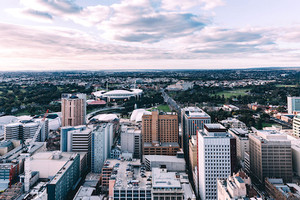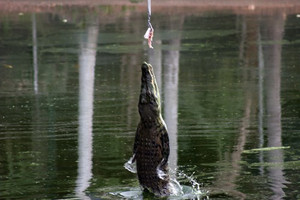
It may lack the pagodas and pavilions of traditional China, but Shanghai is the most evocative of cities in the world’s oldest surviving ancient civilisation. And for a city with a reputation as a centre of sin inhabited by ne’er-do-wells, ladies of ill repute and colonial traders, the Shanghai of today bears little resemblance to its historical clichés. A megalopolis of 24 million people, give or take a couple of million depending on the source, Shanghai’s dizzying pace of development is well documented and this is the epicentre of China’s economic boom. At street level it has an energy that reflects its status as the economic, financial and commercial capital of China. While it lacks the architectural grandeur of China’s more famous cities like Beijing, the building boom of the last decade is still blatantly evident with the sheer number of cranes giving birth to more glass and steel skyscrapers. This is a city that seems hellbent on bulldozing the past and replacing it with all the trappings of modernity.
Shanghai is the largest city in the world’s most populous country, beating out the capital, Beijing, by a few million, and its name literally means “city on the sea”. However, the city actually sits on the Huangpu River, a tributary of the Yangtze which empties into the East China Sea. The river is the lifeblood of Shanghai and highlights why this is one of the world’s great maritime cities with a steady stream of traffic along the waterway, including massive barges carting steel and concrete up river to feed the cranes that stretch into the distance. Not surprisingly, Shanghai is one of China’s richest cities and is regarded as a model for the future of the country where modern skyscrapers, international restaurants, trendy bars, expansive shopping malls and European cars fuse together to create a truly grand city to rival the likes of Hong Kong and Bangkok. Shanghai’s links to trade with the western world at the turn of the 20th century means it has an east-meets-west feel with some traditional Chinese architecture mixed in with French flair, and the occasional art-deco building which wouldn’t be out of place in New York or Chicago. And as for the “old Shanghai”, while it’s true that the city is obsessed with modernity and much of it has disappeared, there’s still enough evidence of its past to make exploring its streets a rewarding experience. In just 48 hours it is possible to cover the city’s key sights, along with a multitude of food stops which are fast, and fun.
Morning: Stroll The Bund
It’s one of the most recognisable architectural symbols of Shanghai on the banks of the Huangpu River, and the one and a half kilometre stretch of roughly 52 buildings features a mixture of styles including Gothic, Renaissance, Romanesque, Baroque, Neo-Classical and Art Deco. The first office opened here in 1846 on a muddy riverbank and these days an elegant walkway runs on top of a 700 metre retaining wall which allows for fantastic views of Shanghai’s modern side at Pudong on the other side of the river, and the incredible cargo traffic that cruises up and down. And at night, Pudong lights up into one of the world’s most memorable cityscapes. Connecting the historic Bund to Shanghai’s futuristic side at Pudong is the Bund Sightseeing Tunnel which runs under the river. It’s a kitschy and bizarre way to cross in a glass-enclosed capsule with flashing lights, laser displays with bizarre themes and creepy voice-overs. At around 50 yuan for a one-way trip, it’s more expensive than a taxi or the subway but far more surreal. Perhaps it’s designed to make the Pudong area itself look normal by comparison. Less than 20 years ago, Pudong was farmland and now it’s one of the world’s fastest developing economic zones. Dominating the skyline is the Oriental Pearl TV Tower and the Jinmao Building which both offer observation platforms to take in the infinite Shanghai skyline.
Afternoon: Shanghai Municipal History Museum
Right beneath the Oriental Pearl TV Tower is one of the big surprises in Shanghai. The drearily titled Municipal History Museum brings to life the old Shanghai with streets that have been recreated so visitors can walk through the displays as if they were actually there. The displays focus on the period between 1860 and 1949 and everyday sights and sounds are reproduced, some in full scale with life-like mannequins, and some that are scaled down and include farms, bars, a teahouse, and stock exchange and there’s also a transport collection of rickshaws, a US Army jeep and vintage cars. The heart and soul of Shanghai’s commercial centre, Nanjing Road stretches from the Bund to the People’s Park with much of it pedestrianised. It’s a touristy stretch of air-conditioned shopping malls and designer stores selling boutique clothes and jewellery. The prices are mostly higher than at home, and beware of street hawkers selling fake designer gear, who will follow tourists relentlessly while on Nanjing. A firm “boo yow”, or,“I don’t want it”, should do the trick. On the plus side, many of the malls and department stores have inexpensive noodle joints and restaurants in their food courts, usually below ground level. From here, it’s an easy walk back to the Bund to see it by night.
Day Two
Morning: The People’s Square, The Old City
To the west of Nanjing Road, the People’s Square is the official centre of Shanghai and is home to the Municipal Government, the Shanghai Museum, the Shanghai Art Museum, the Grand Theatre and Exhibition Hall. A former race track before gambling and horse racing were banned by the Communist Government, its oval shape is still obvious and this is where the locals meet, perform tai chi in the morning, feed the pigeons and fly their kites. Most maps of Shanghai are outdated by the time they’re printed and finding the “old Shanghai” can be difficult. Mini-districts have been replaced by construction sites for apartments and shopping malls and wandering in search of traditional areas can be disheartening. The best way to start is to head to Shanghai Old Street, or Fangbin Road, which is further south from Nanjing Road. It’s adjacent to Yu Yuan Garden, another attraction, and although this area is quite touristy, it’s also photogenic and gives some idea of what life used to be like in Shanghai. If you head out from here, it is possible to find backstreets and alleys which are authentic and have survived, so far.
Afternoon: French Concession District, Jade Buddha Temple
Many parts of the French Concession District also remain relatively intact with old houses and tree-lined streets, and now increasingly, fashionable boutiques and restaurants. For most of the 20th century, this was the premier residential and shopping district in Shanghai and despite the heavy development it still retains much of its charm. The shopping street of Huaihai Zhong Lu is popular with the locals and runs through the heart of the district. The Jade Buddha Temple is a working temple with 70 or so monks, living and worshipping here. The temple, north-west of the city centre, was built between 1911 and 1918 in the style of the Song Dynasty (960-1279) and it features symmetrical halls and courtyards, and bright yellow walls. The centrepiece is a two metre white jade Buddha which was transported from Burma in 1882. Other Buddhas, statues and gods decorate the halls along with ancient scriptures and paintings.
If You Have Extra Time
Yu Garden: Located in the northeast of the old town and laid out in 1559, Yu Garden, or the Garden of Happiness, spans an area of more than 20,000 square metres. Highlights include the Outer Garden, the park's main hall, and the Hall of Spring.
Longhua Temple: This temple, which is one of the oldest religious sites in China, sits in a park in the southwest area of Shanghai. It has been destroyed and rebuilt many times through the ages, with the present structure dating back to the 10th century. Highlights include five large halls, including the Maitreya Hall featuring a large Buddha statue, the Bell Tower, the Library, and the 500 gold-painted Luohan Buddhas.
Xujiahui Cathedral: Built in 1911 in a Neo-Romanesque style, this lovely structure is also called St. Ignatius Cathedral, and a reminder of Shanghai's rich multi-national heritage. Located in the southern district of Xujiahui, it's the largest place of Roman Catholic worship in Shanghai enjoying a park-like setting. Highlights include twin 50-meter-high bell-towers and lovingly restored interior featuring stained glass windows.
China Art Museum: This is the largest art gallery in Asia, and home to the country's most important collections of modern art, located inside the spectacular China Pavilion. Highlights include collections of Chinese modern art, exhibits of prominent Chinese artists, and works depicting Shanghai's cultural development over the decades.
- By:
- Ben Hall
Reviews
-
Shanghai Surprise
I've been to China a few times on business but Shanghai only once. It's not my favourite Asian city by a long way - my top pics are Hong Kong and Tokyo - but it's quite fascinating in its own way, although much of its heritage is being lost to development.
-
Love Shanghai
We toured China in a small group last year and had a great time. The flights were okay, with a Chinese airline, but we had 5 star accommodations and great transport between the destinations, although we would have been lost without a translator. Loved the food, the people were friendly, and Shanghai was my favourite place other than the Terracotta Warriors site. Such a vibrant city!













